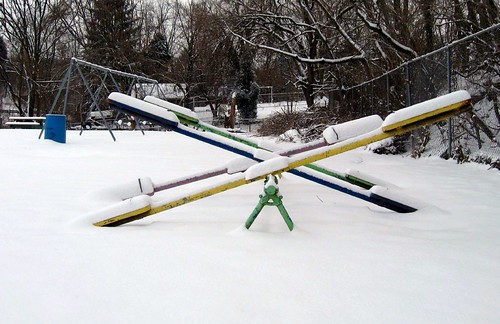Small Business Balance Sheet (part 2)
Disclaimer: Realize that this blog post is not an accounting class. This is just simple, basic information for small business owners who would normally freeze up when they hear the word accounting. If you’ve got an accountant preparing your return for you, you have the right to ask questions and not be intimidated. Sometimes the balance sheet numbers just look like mumbo jumbo. My goal here is to help you get a little handle on what your balance sheet is showing you.
In the last post we learned that
Assets = Liability + Owner’s Equity
We left off with partners Peggy and Sarah having a very simple balance sheet of $12,000 in cash and $12,000 in owner’s equity. (example 1) But in real life, there’s usually more to a balance sheet than just your cash.
So let’s say that Peggy and Sarah (I’m going to call the company P&S from here out, okay?) bought a piece of equipment for $5,000 cash. That’s going to change the balance sheet—but not the owner’s equity. Look. We took $5000 out of cash, so now they only have $7000 left. But they have a $5000 piece of equipment—equipment is also an asset so their assets still equal $12,000. Since they still have no liabilities, then their owner’s equity is also still $12,000.
But maybe they didn’t feel like they could spend $5000 cash on that equipment, so they charged it on a credit card instead. (example 3) They still have their $12,000 cash, plus they have $5,000 in equipment so their total assets are $17,000. But since the equipment is on a credit card, they now have a liability of $5,000. Their total Liabilities + Owner’s Equity = $17,000 (because it has to equal the total assets, right?). So the Owner’s Equity is $12,000. They could have taken out a loan instead. A loan would also be a liability and would affect the balance sheet in the same way.
Now over time, the equipment will get used and worn down. In accounting, it’s called depreciation. (Oh yeah, that’s a whole other thing to tackle but not today.) But just for the very simple balance sheet side—let’s say P&S’s equipment depreciated by $1,000 during the year. In example 4, we haven’t changed anything else so when the book value of the equipment goes down, so did the owner’s equity.
(Kind of like the housing market crash—maybe you bought a house for $200,000 but then the market crashed and the house was worth $150,000 instead. When the value of your house when down—do did your equity. It’s a similar situation.)
You see how every little thing affects the balance sheet. As P&S earns income, the cash goes up—and so does the equity. As they spend money, the cash goes down—and so does equity. It would drive you nuts to monitor the balance sheet every minute, but it’s constantly changing. But you do need to take a good look at it at least once a year to see where you stand.


